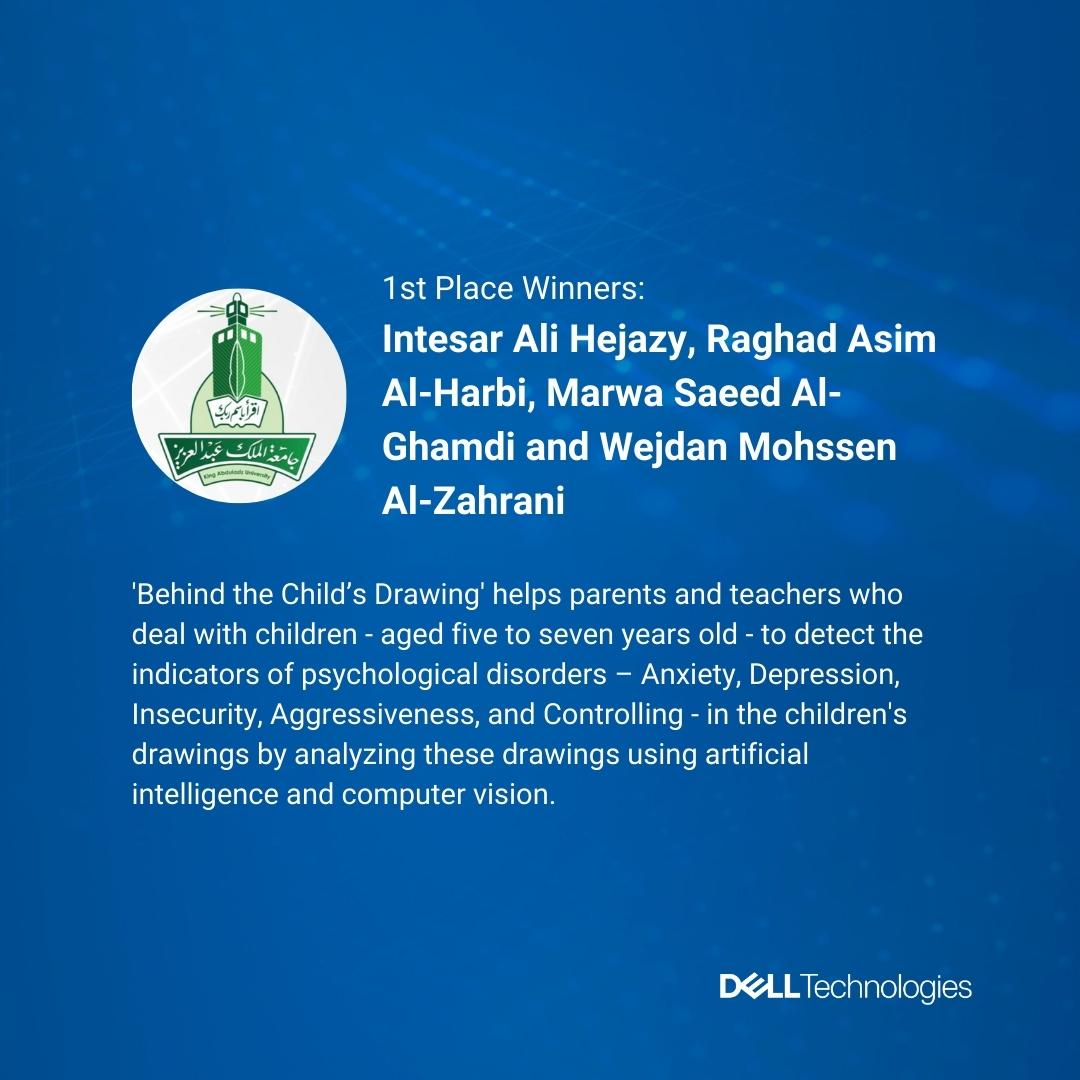- For the past 7 years, Dell Technologies has offered a platform to highlight the talents across the META region and encouraged undergraduates to express innovation and maximize the use AI, IoT, 5G, Multi-cloud and many more technological tools for their graduation projects.
- “Envision the Future” is accompanied by Dell Technologies’ tools and expertise to better the lives of people and the planet equally
- Dell Technologies is pleased to announce the 3 winners of its annual competition, “Envision the Future”.
Dell Technologies is pleased to announce the 3 winners of its annual competition, “Envision the Future”.
For the past 7 years, Dell Technologies has offered a platform to highlight the talents across the META region and encouraged undergraduates to express innovation and maximize the use of AI, IoT, 5G, Multi-cloud and many more technological tools for their graduation projects.
“Envision the Future” is accompanied by Dell Technologies’ tools and expertise to better the lives of people and the planet equally. In response to that, the 2021/2022 competition accentuated on the priority of projects that focus on the use of AI, IoT, 5G and Multi-Cloud technologies and develop solutions that benefit essential sectors of our society such as healthcare and education.
First Place
1st place winner project ‘Behind the Child’s Drawing’ from King Abdulaziz University in KSA. Behind the Child’s Drawing application was created to help parents and teachers who deal with children – aged five to seven years old – to detect the indicators of psychological disorders – Anxiety, Depression, Insecurity, Aggressiveness, and Controlling – in the children’s drawings by analyzing these drawings using artificial intelligence and computer vision. The application also gives parental recommendations that were reviewed with experts, the application has a psychological basis which is the Family-Drawing test.
Team members Intesar Ali Hejazy, Raghad Asim Al-Harbi, Marwa Saeed Al-Ghamdi and Wejdan Mohssen Al-Zahrani thought down to every detail and optimized the user-friendly application through the use of Python programming language, Dart programming language with its Flutter framework, Visual Studio Code, and Android Studio environment.
Watch their full presentation here.
Second Place
2nd place winners Ashith Farhan, Joel D’Souza, Farooq Mirza and Sabbir Alam from American University of Sharjah in UAE introduce Multisensor System to Predict Early Signs of Spinal Diseases.
Spine Flex is a novel is a smart chair system that can detect deformities by sensing, recording, and classifying the posture of a seated user.
The system collects readings from the user through sensors embedded on the smart chair and uses machine learning to classify the readings and detect anomalies over time that are indicative of variation in spine structure. The users are provided with a mobile app interface that displays relevant
information regarding their spine health and real-time alerts on improper posture.
If you are interested to learn more about their application to prevent exacerbation and avoiding the need for expensive surgical corrective procedures, watch their full presentation here.
Third Place
Princess Sumaya University For Technology in Jordan comes in 3rd place with team members Azmi Alzaben, Lubna Sa’d Al Dine, Sara Abbad stepping in with design and implementation of a Secure Smart City Infrastructure Health Monitoring System using IoT Technologies. Structural health monitoring (SHM) applications, including early warning systems (EWS). A SHM system extracts and provides information about variations in an individual component or in the complete structure. In this project, we built grounds up a secure SHM system incorporating the LoRa wireless IoT connectivity splitting the design into two main subsystems, namely electronic hardware system design and software system design.
Check out their full presentation here to learn more about how the team conducted a comparative performance analysis of a collection of machine learning (ML) classification algorithms to evaluate their detection capacities in determining faults or variations in a monitored structure state.





